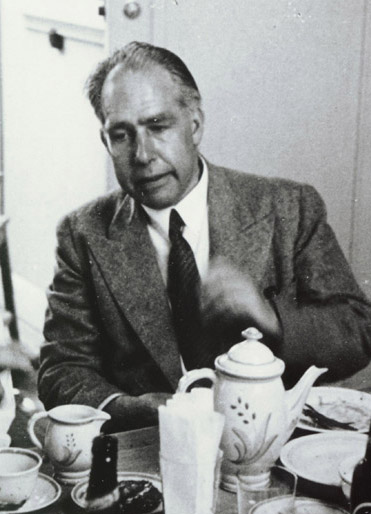 | In early 1939 Neils Bohr commented on whether enough U235 and U238 could be separated to produce a bomb: "It can never be done unless you turn the United States into one huge factory" (Rhodes, 1986, p.500). And indeed, this highly unlikely prospect is largely what happened. |
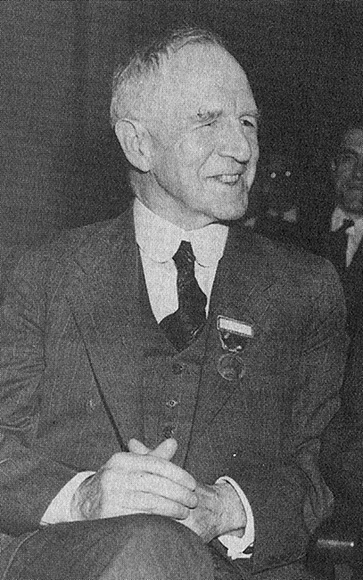 | The appointed chair of the Committee on Uranium, Lyman Briggs, arranged for $6,000 to fund a supply graphite to be used in tests as a moderator for neutron energy. The money came from a Presidential emergency fund. Briggs was near retirement, felt no urgency in pursuiing the research, and was generally a patient adminstrator. |
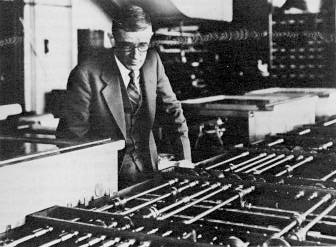 | Meanwhile, Vannevar Bush — inventor of differential analyzer, former Dean at MIT, and Director of the Carnegie Institution — has joined the power circles in Washington, D.C., where he is trying to promote scientific research for defense and lobbying for the need to organize it under one leader. |
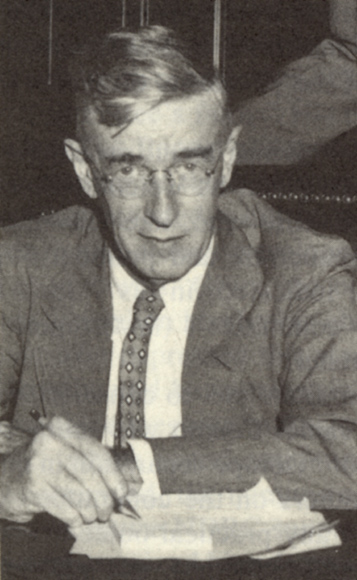 | In 1940, he becomes head of a new National Defense Research Committee, which includes the earlier Committee on Uranium. By mid-1941, he has formed a second committee at the National Academy of Sciences to consider again the possibility of an atomic weapon. The committee echoes the ambiguous prospects -- not the answer he wants. |
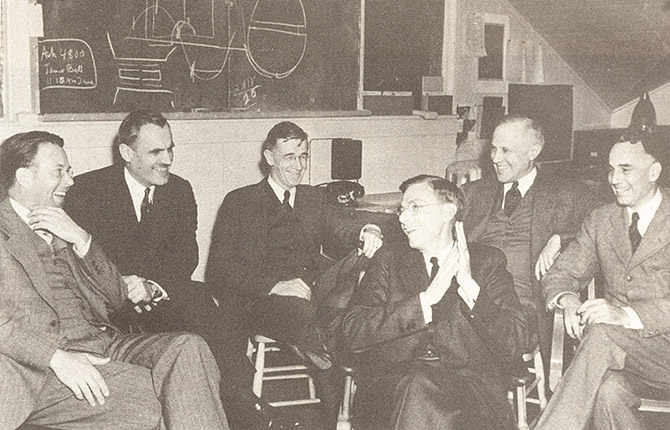 | Bush has also created a larger Office of Scientific Research and Development (left). Investment for science to support the military is increasing. In late 1941, Bush convenes the "same" National Academy committee, but he has stacked the membership and now gets the verdict he wants. Tests on plutonium (element #94) prompt a "go" trajectory on an atomic weapon. |
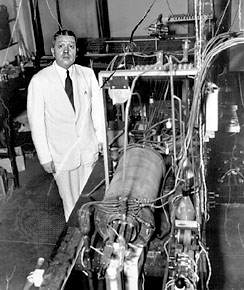 | The U.S. enters the war December, 1941, after an attack on Pearl Harbor. The task of separating U235 by mechanical means is given to Nobel Prize winner Harold Urey at Columbia University. |
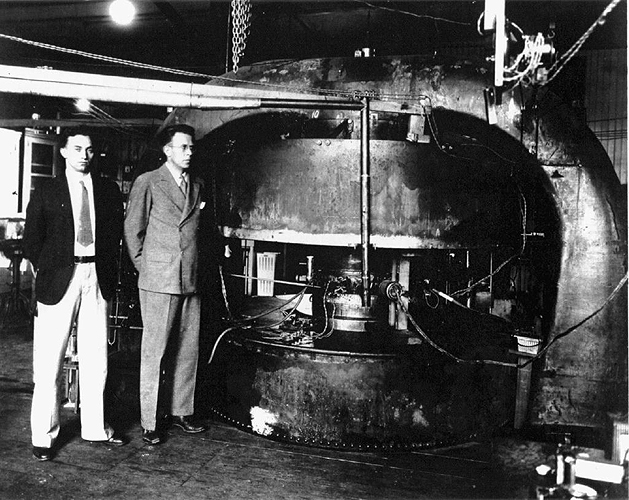 | Meanwhile, Ernest Lawrence at the University of California, Berkeley tries to separate U235 by electromagnetic methods. |
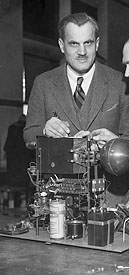 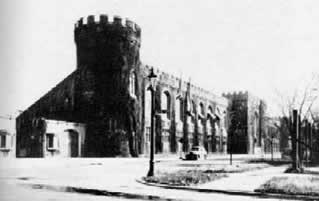 | The task of separating plutonium and designing the bomb is given to Arthur Compton at the University of Chicago. |
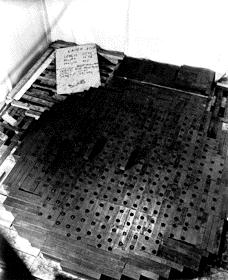 | In December of 1942, the first sustained nuclear fission chain reaction occurs at Univeristy of Chicago.
The project of building the bomb has been transfered to the Army Corps of Engineers (where the budget can be hidden), under a bogus Manhattan Engineering District (hence the "Manhattan Project"). It is centered in 57 acres outside Knoxville, Tennessee: Oak Ridge Laboratories. It later moves to Los Alamos, New Mexico. In total, there are 43,000 people working at 37 installations, in a sense epitomizing Bohr's prediction. |
| On July 16, 1945 -- $2.2 billion later -- at desolate spot in New Mexico . . . 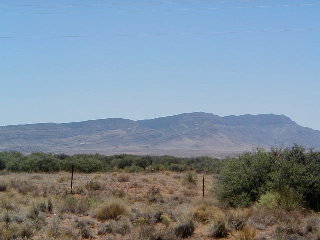
|
| . . . the device is assembled . . . 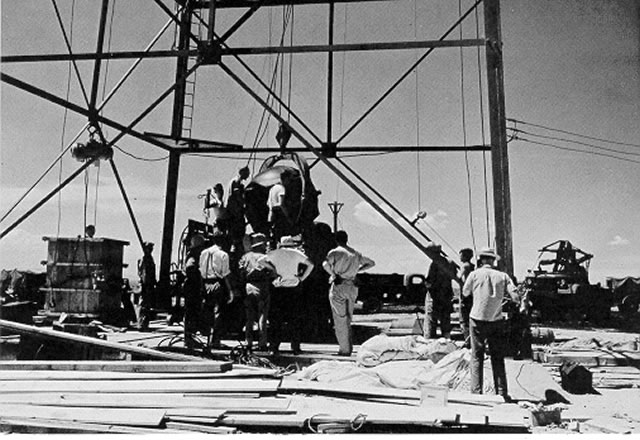
. . . and tested. |
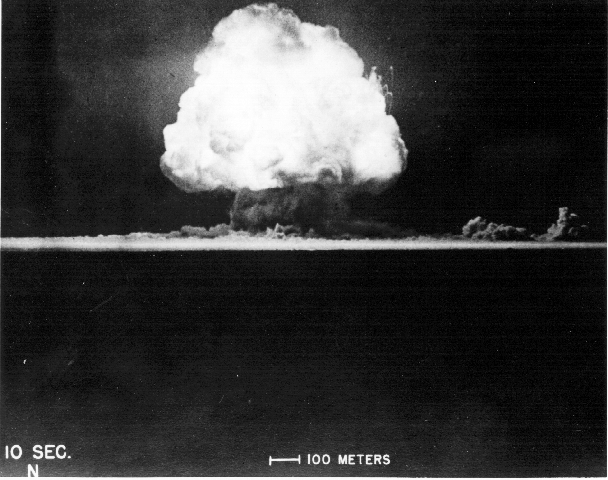 | In the predawn, 20 miles away, physicist Edward Teller, put on suntan lotion. Another observer recalled: "It was an eerie sight to see a number of our highest-ranking scientists seriously rubbing sunburn lotion on their faces and hands in the pitch-blackness of the night, twenty miles from the expected flash." |
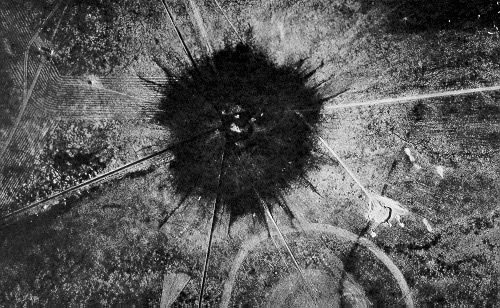 | Enrico Fermi was standing with him. He later recalled: "About 40 seconds after the explosion the air blast reached me, I tried to estimate its strength by dropping from about six feet small pieces of paper before, during and after the passage of the blast wave. Since, at the time, there was no wind, I could observe very distinctly and actually measure the displacement of the pieces of paper that were in the process of falling while the blast was passing. The shift was about 2.7. meters, which, at the time, I estimated to correspond to the blast that would be produced by ten thousand tons of T.N.T." The actually power was 8.6 Ktons, four times the pre-test estimate. |
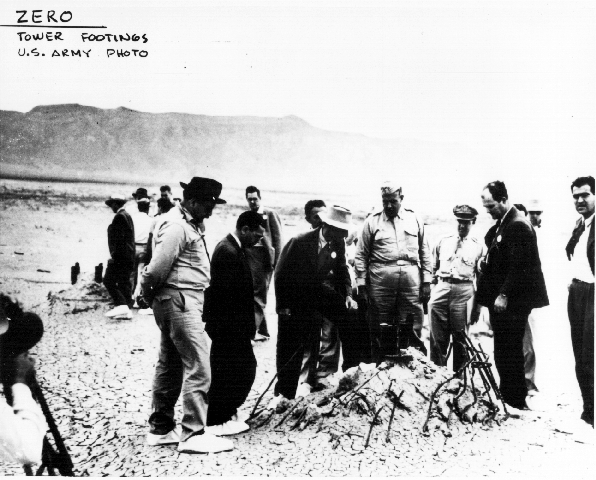 | Little remained at "ground zero." |
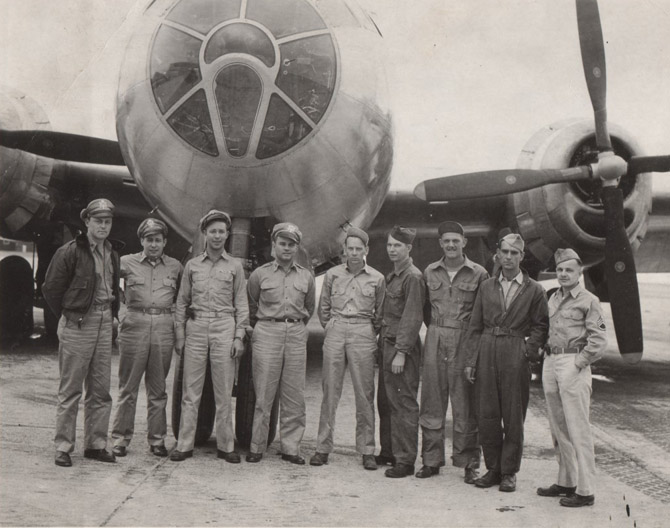 | On August, a mere 3 weeks later, the crew of Enola Gay loaded the new U235 bomb on their airplane. |
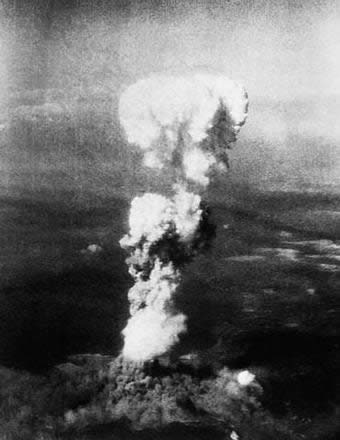 | It was dropped on Hiroshima, Japan. |
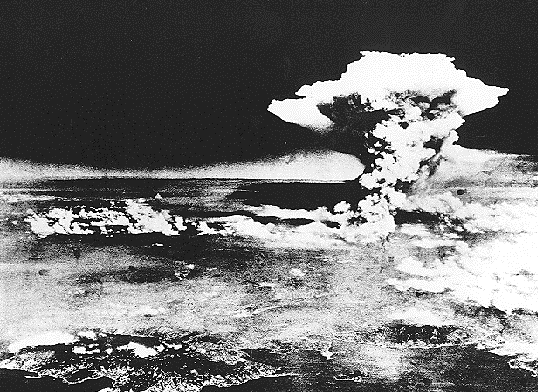 |
| Three days later a plutonium 239 bomb was dropped on Nagasaki, ending the U.S. war with Japan and opening a great moral discussion which continues today. | 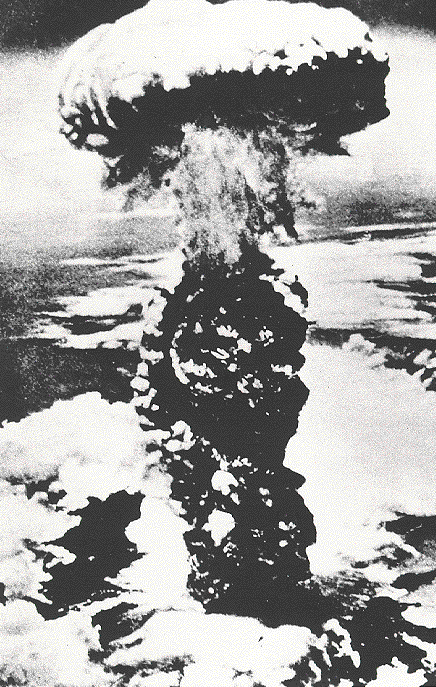 |

